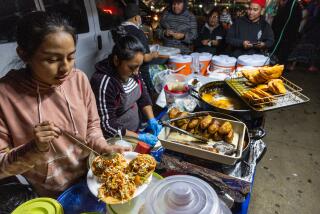Guatemala’s Cruel Side
- Share via
Even in Central America, where military men have never been overly concerned with the niceties of human rights, the Guatemalan army has a fearsome reputation. Its generals and colonels expound a fiercely protective doctrine of national security, which their soldiers enforce with cold-blooded efficiency. That is why most outside analysts agree that Guatemala, alone among the many nations fighting local insurgencies, was able to crush its guerrillas.
But that victory, achieved without assistance from the United States, produced, in addition to tens of thousands of deaths, some profound side effects. One of the more visible side effects was recently documented by Times correspondent Kenneth Freed, who visited several “model villages” built in Guatemala’s hinterlands to resettle Indian peasants displaced by warfare. While government officials proudly display these villages as symbols of progress--complete with running water, electricity and other modern amenities--they are also plagued by underlying social tensions. Many of the residents cannot afford to pay for electricity. Males are forced to take part in civil-defense patrols organized by the military. Others are pressed into labor gangs, which are not paid for the work they do. Saddest of all, many refugees are so alienated and isolated in their new surroundings that drunkenness is common. As one resident told Freed, “Coming here was not our idea. The army told us we were going to do it. Life was hard before, but it was our life. Now it isn’t.”
Pondering Freed’s graphic descriptions of the conditions in these villages, a reader in the United States might be reminded of the social problems on many Indian reservations in this country. In some important ways, the comparison is apt. Certainly the anti-guerrilla campaign in Guatemala had an undercurrent of racial warfare. Most of the war’s victims were Indian, descendants of the ancient Maya. The victors were the Spanish-speaking Guatemalans of mixed ancestry who run the government and its institutions, including the army. And while some government officials claim the model villages are a solution to the social problems that plague Guatemala’s Indian population, like illiteracy and poor health, the real reason they came into existence was to help the army wage its counterinsurgency campaign.
The United States has given only minimal aid to the Guatemalan military since the 1970s, when the generals then running that country refused to accept U.S. military assistance because the Carter Administration had the temerity to criticize their human-rights record. Given the harsh methods the Guatemalan army used to win its war, U.S. officials can be grateful that they have no blood on their hands. But for the same reason, there is probably little this country can do to rectify the conditions that exist in the model villages.
But there is a civilian government in Guatemala City now, which technically has some authority over the military (although how much remains an open question). That government badly needs, and wants, U.S. economic assistance. The United States should provide whatever it can. But in doing so U.S. officials must make their disapproval of model villages clear, and do all they can to ensure that none of the aid this country gives Guatemala is used for such dubious experiments.
More to Read
Sign up for Essential California
The most important California stories and recommendations in your inbox every morning.
You may occasionally receive promotional content from the Los Angeles Times.










